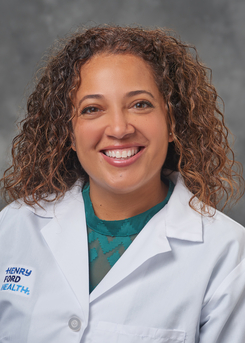 Transcript: Well, I think it starts from the admission process, I think, you know, we have to start looking beyond the numbers how people look. And we see that at a national level, right, where we have to include people who look of different colors, that allows to have that diversity to have the discussion at the table, that’s the whole point of DEI, is not to create a narrative that doesn’t exist. And we know statistically that if you have an African American physician, as your primary care physician, you are more likely to live longer and have a better quality of life. And so that’s important to have those physicians in training. And so we have to have those numbers included, as well as making sure we have people who are open to having that education brought to them that they may understand that they have implicit biases, you know, we’re all going to make mistakes, but are you teachable? Are you someone willing to get dirty and understand that this is not a pretty process? And we have to do some internal look and internalization of our feelings and say, Okay, how do we navigate this, remove those barriers, and making sure that we have advocacy in the residency programs having advocacy in the faculty programs. The final thing is not just making sure those students come in there, but they have faculty that look like me, that look like you that they know that you know, we are educated, that we have a value to bring that’s far more resourceful at times than we will see from others who have no insight. So I think that having that health equity includes having people who can educate them on the experience, and especially when I’ve taught my students they you know, hearing them say certain things that they wouldn’t even know. But no one else could highlight that for them unless they came from that type of community.
Transcript: Well, I think it starts from the admission process, I think, you know, we have to start looking beyond the numbers how people look. And we see that at a national level, right, where we have to include people who look of different colors, that allows to have that diversity to have the discussion at the table, that’s the whole point of DEI, is not to create a narrative that doesn’t exist. And we know statistically that if you have an African American physician, as your primary care physician, you are more likely to live longer and have a better quality of life. And so that’s important to have those physicians in training. And so we have to have those numbers included, as well as making sure we have people who are open to having that education brought to them that they may understand that they have implicit biases, you know, we’re all going to make mistakes, but are you teachable? Are you someone willing to get dirty and understand that this is not a pretty process? And we have to do some internal look and internalization of our feelings and say, Okay, how do we navigate this, remove those barriers, and making sure that we have advocacy in the residency programs having advocacy in the faculty programs. The final thing is not just making sure those students come in there, but they have faculty that look like me, that look like you that they know that you know, we are educated, that we have a value to bring that’s far more resourceful at times than we will see from others who have no insight. So I think that having that health equity includes having people who can educate them on the experience, and especially when I’ve taught my students they you know, hearing them say certain things that they wouldn’t even know. But no one else could highlight that for them unless they came from that type of community.
Related Stories
More Medical News









